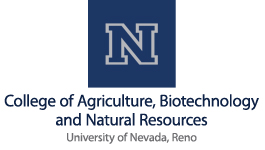Team:Nevada
From 2010.igem.org
(→Abstract) |
|||
| Line 12: | Line 12: | ||
<html><a href="https://static.igem.org/mediawiki/2010/9/9c/Theory_Home-foot_UNR.png"><img src="https://static.igem.org/mediawiki/2010/9/9c/Theory_Home-foot_UNR.png" class="shadow" style="float:left;width:900px;margin:10px"></a> | <html><a href="https://static.igem.org/mediawiki/2010/9/9c/Theory_Home-foot_UNR.png"><img src="https://static.igem.org/mediawiki/2010/9/9c/Theory_Home-foot_UNR.png" class="shadow" style="float:left;width:900px;margin:10px"></a> | ||
</html> | </html> | ||
| - | <p>Fluorescent Plant Image Taken From: http://www.edinformatics.com/inventions_inventors/genetic_engineering.htm</p> | + | <p style="text-align:right;"><span style="font-size:10px;">Fluorescent Plant Image Taken From: http://www.edinformatics.com/inventions_inventors/genetic_engineering.htm</span></p> |
---- | ---- | ||
Revision as of 03:06, 27 October 2010

Abstract

Our long term goals are to develop plant biosensors that reliably measure changes in the local environment. In the process of developing biosensors, the 2010 Nevada iGEM Team need to develop fundamental promoters, reporters, and plasmids for plants. Therefore, the 2010 Nevada iGEM Team has three goals for this year’s competition. First, we are going to test the validity of utilizing Nicotiana tabacum (NT cells) as a model for the expression of higher plant genes for future iGEM competitions. NT cells are a faster, cheaper, and safer model than traditional plant transformation. These cells can therefore be utilized as a quick proof-of-concept test model before moving synthetic constructs into plants of interest. We also aim to produce an iGEM-compatible plant-specific plasmid, several stress-inducible plant promoters, reporter genes containing Kozak sequences (ribosome binding sites) and terminators that conform to BioBrick standards. Lastly, we hope to measure the induction of these stress promoters in real-time by performing a fluorometry assay in which stress will be applied to NT cells and fluorescent output by a reporter (GFP) will be measured to detail induction in real time. This method has a distinct advantage over microarrays since microarrays are only one ‘snapshot’ in time.
Fluorescent Plant Image Taken From: http://www.edinformatics.com/inventions_inventors/genetic_engineering.htm
We would like to thank the following sponsors for their support in helping us make this project possible. Much thanks to the [http://www.cabnr.unr.edu/Students/Majors.aspx Departments of Biochemistry and Biotechnology] and the [http://www.cabnr.unr.edu/Students/Glance.aspx College of Agriculture, Biotechnology and Natural Resources] for their encouragement and support. Thank you [http://www.unr.edu/inbre/ Nevada INBRE] for over $16,000 in support for supplies and registration costs. Thank you to Associated Students of the Univeristy of Nevada for supporting our fund raising efforts. Thank you to [http://www.promega.com/Catalog/CountrySelect.aspx?returnurl=/Default.asp Promega Co.] for free enzyme donations. Thank you to [http://www.invitrogen.com/site/us/en/home.html?cid=covinvggl89100000002336s& Invitrogen Co.] for a discount on our Vector NTI program.

| 
| 
| 
| 
|
|---|
 "
"
